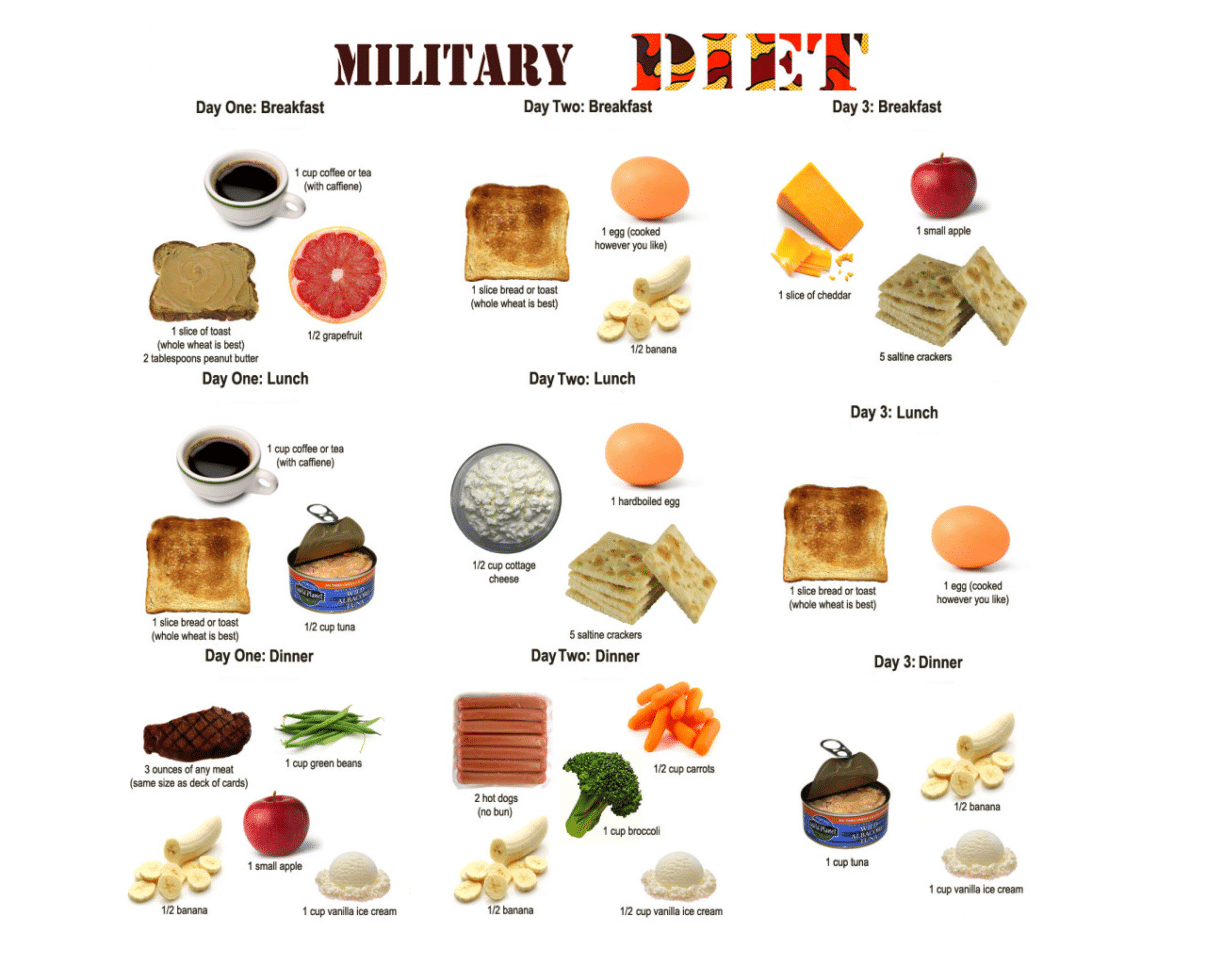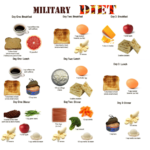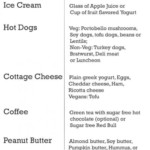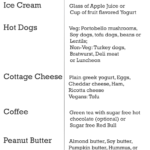Military Diet Plan With Substitutions – The Military Diet is a type of diet which is believed to help users lose excess weight however there are a few concerns regarding it. It is the Military Diet is a weight loss program that was devised by the Dr. James Krieger and the U.S. Department of Defense in an effort help people lose weight and keep it off. The diet consists of three phases: 1) the first phase will last two days, during which you are able to take as much food as want; 2) the next phase lasts four days, where you will be eating low-calorie food items; 3) the third phase runs for two consecutive days, during which you are free to eat what you want again.
While this program may seem like a good idea at first glance, there are some issues with this plan. A few people have said that they’re not losing weight, or have only lost some pounds within the initial week.And because the majority of people who follow this diet often use an extreme version of the plan or mix it with other low-carb diets like Atkins and others, some experts have expressed doubts about the excessive fat content.
What is the Military Diet Plan?
The Military Diet Plan is an strict diet plan which was initially designed to be used by members of the United States military. It was developed in order to assist people in getting back into shape after being deployed. The diet program is divided into three phases. The initial stage is a preparation period and is which is followed by a low calories diet, followed by the two-day maintenance period.
The Military Diet Plan is not solely about losing weight, it’s about improving your health and feeling good about yourself.
How to Follow the Military Diet Plan for Successful Weight Loss
The Military Diet is a strict brief-term diet regimen that was created to assist people shed up to 10 pounds within a single week. There are three different phases in the Military Diet according to:
Phase 1: Restricting calories by eating only certain foods for three days.
Phase 2 Phase 2: Reintroducing healthy food on your menu for 4 days and then continuing on phase 1 for 3 more days.
Phase 3. Reintroducing healthy foods and maintaining this mode of eating indefinitely.
What are the Benefits of Following a Military Diet?
A military-style diet program which was developed for those who are looking to shed pounds quickly. It’s not a long-term solution, but it will help you return to your eating habits. It was developed through the US Department of Defence in the 1970s and 1980s to try to help people suffering from weight issues maintain their weight during their time in the military. It’s not intended to be used for more than three months at a stretch because it restricts the amount of calories consumed and food choices too much. The military diet can be utilized by those who wish to shed 10 pounds in one month.
Conclusion and Final Thoughts on the Military Diet Plan
The Military Diet Plan is a diet plan that restricts the number of calories you consume. It is also a diet program that restricts the foods you consume from groups, and is used by military personnel for many decades. This Military Diet Plan was created by nutritionist, Dr. James Krieger, who sought to design a diet regimen that people could adhere to during their time on the battlefield and didn’t have access to a wide range of foods. He found out that limiting calories and food groups could help people lose weight quickly so he designed this diet plan to help people lose weight quickly , especially when they’re in the military.
Conclusion Conclusion: Military Diet Plan can be described as restricted diet program created for people who are part of the military and need to lose weight quickly , or to maintain their weight when they are on deployment.





